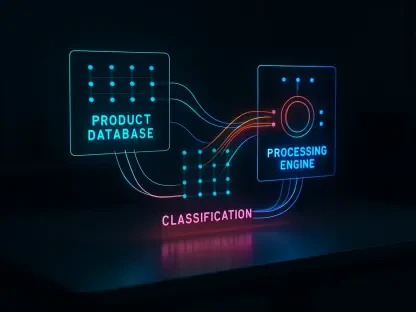I’m thrilled to sit down with Nia Christair, a trailblazer in the world of mobile technology and beyond. With a remarkable background in mobile gaming, app development, device and hardware design, and enterprise mobile solutions, Nia has now turned her expertise to groundbreaking innovations in AI-driven computing. Today, we’re diving into her insights on Humain, a Saudi Arabia-based company that’s reimagining the future of human-computer interaction with their ambitious ‘Humain One’ technology stack. We’ll explore the vision behind replacing traditional apps with AI agents, the unique features of their operating system, and how this could transform enterprise productivity—while addressing the skepticism surrounding such a bold endeavor.
How did the concept of Humain come about, and what’s the driving force behind its mission to revolutionize how we interact with computers?
The concept for Humain stemmed from a frustration with the stagnation in user interfaces over the decades. Despite incredible advancements in technology, we’re still tied to icons and mouse clicks—a paradigm that’s been around since the 1980s. The mission is to create a more intuitive, human-centric computing experience where technology anticipates and acts on our needs. The driving force is the belief that AI can replicate human-like understanding, especially for repetitive or complex work tasks, freeing us to focus on creativity and strategy.
What specific challenges in today’s computing landscape is Humain aiming to address by replacing traditional apps with AI agents?
Today’s computing landscape is cluttered with thousands of apps that often don’t integrate well, leading to inefficiency, especially in enterprise settings. Humain aims to solve this by using AI agents that can interpret user intent—whether through voice or text—and execute tasks autonomously. This eliminates the need to navigate multiple apps or interfaces, addressing the problem of unrealized value in organizations where productivity gets bogged down by outdated workflows.
Can you elaborate on why Humain views the current icon-and-click interface as outdated, and what limitations you see in it for modern users?
The icon-and-click interface, while groundbreaking in its time, is now a bottleneck. It forces users to manually search for tools, learn specific app functionalities, and piece together workflows. This is especially limiting in enterprise environments where time is critical. For modern users, who expect seamless and instant results, this approach feels clunky and disconnected from how we naturally communicate—through language and intent. Humain sees a future where you don’t click through menus; you simply state what you need, and the system handles the rest.
How does Humain plan to differentiate itself from tech giants who are also integrating AI into their operating systems?
Humain’s differentiation lies in its full-stack approach and its focus on completely redefining the user experience. Unlike others who are adding AI as a layer on top of existing systems, Humain is building from the ground up with an OS, hardware, and data centers designed around AI agents as the core interaction model. This allows for a level of integration and seamlessness that’s hard to achieve with retrofitted solutions. It’s about creating a unified ecosystem where AI isn’t just a tool—it’s the foundation.
Can you walk us through what Humain One is and how it integrates different components into a single cohesive experience?
Humain One is the culmination of our vision—a complete technology stack that includes a custom operating system, purpose-built hardware like laptops, and powerful data centers. It integrates these components to create a computing experience where users interact through voice or typed commands, and AI agents execute tasks without traditional interfaces. Think of it as a unified platform where the OS understands your goals, the hardware optimizes performance, and the data centers provide the raw computing power to make real-time, intelligent actions possible.
What sets the Humain operating system apart from established systems like Windows or macOS in terms of user interaction?
Unlike Windows or macOS, which still rely heavily on graphical interfaces and app ecosystems, the Humain OS is built on a barebones interface powered by AI agents. It strips away the clutter of icons and menus, focusing instead on natural language interaction. Users can simply tell the system what they need—whether it’s drafting a report or analyzing data—and the OS orchestrates the necessary actions behind the scenes. It’s about simplicity and intent-driven computing rather than manual navigation.
Could you share an example of how AI agents within Humain One handle a specific work task autonomously?
Absolutely. Imagine an HR professional needing to compile a report on employee turnover for the past quarter. With Humain One, they could simply say or type, “Generate a turnover report for Q3 with key insights.” The AI agent would access relevant databases, pull the data, analyze trends, and format a polished report—all without the user opening a single app or clicking through spreadsheets. This kind of automation saves hours of manual work and reduces the learning curve for complex software.
How do partnerships with hardware leaders contribute to delivering Humain’s vision of AI-first computing?
Our partnerships are critical to ensuring that every piece of the puzzle works seamlessly. Collaborating with leaders in hardware means we can optimize our laptops for the specific demands of AI-driven tasks, ensuring low latency and high performance. Similarly, working with top GPU providers for our data centers ensures we have the computational muscle to power these AI agents at scale. These alliances allow us to deliver a cohesive experience from device to cloud, which is essential for real-time, intelligent computing.
What role do Humain’s data centers play in powering this new computing paradigm, and why are they so crucial?
The data centers are the backbone of Humain’s AI-driven experience. With gigawatts of capacity, they provide the immense computing power needed to run sophisticated AI models and process user commands in real time. Located strategically, they ensure low latency and high availability, which are crucial for enterprise users who can’t afford delays. Without this infrastructure, the vision of autonomous AI agents handling complex tasks instantly would simply not be feasible.
How does Humain One specifically benefit enterprise users in sectors like HR or finance, and what productivity improvements do you anticipate?
For enterprise users in HR or finance, Humain One acts like a tireless assistant. It can automate repetitive tasks like payroll processing, compliance checks, or candidate screening by understanding high-level instructions and executing detailed workflows. We anticipate significant productivity gains—potentially cutting task completion times by half in some cases—because employees can focus on decision-making rather than manual data entry or app navigation. It’s about amplifying human potential in the workplace.
With a reliance on voice or typed commands, how does Humain ensure the AI accurately interprets user intent every time?
Accuracy in interpreting user intent is paramount, and we’ve invested heavily in advanced natural language processing models tailored for diverse contexts and languages, including regional dialects. The system is designed to ask clarifying questions if there’s ambiguity and learns from user interactions over time to improve precision. We also incorporate feedback loops where users can refine commands, ensuring the AI adapts to individual styles and needs for consistent reliability.
What kind of feedback have early users or partners provided about using Humain One in real-world scenarios?
Early feedback has been incredibly encouraging. Partners in sectors like HR and software development have highlighted how much time they’ve saved on routine tasks and how intuitive the system feels compared to traditional software. They’ve noted that the learning curve is minimal since it’s based on natural communication. Of course, there are areas for improvement, like handling highly specialized tasks, but the overall response underscores the potential for AI agents to transform workflows in real-world settings.
What’s your strategy for convincing enterprises to move away from traditional software and embrace AI agents instead?
Our strategy focuses on demonstrating tangible value through pilot programs and case studies that showcase time savings and cost efficiencies. We’re also working closely with partners to integrate AI agents into existing systems as a transitional step, easing the shift. Building trust is key, so we emphasize security, data privacy, and transparency in how agents operate. The goal is to show enterprises that this isn’t just a futuristic idea—it’s a practical solution that delivers results today.
Addressing the skepticism around Humain’s ambitious goals, how do you respond to doubts about whether this vision is achievable?
Skepticism is natural with any disruptive idea, and we welcome it as a chance to prove ourselves. Our response is rooted in execution—we’ve already built a full stack from OS to data centers, secured significant backing, and partnered with industry leaders. We’re not just theorizing; we’re deploying and iterating based on real user feedback. While the road ahead is challenging, our focus on incremental milestones and robust infrastructure gives us confidence that this vision isn’t just achievable—it’s inevitable.
Looking ahead, what is your forecast for the future of AI-driven computing interfaces in the next decade?
I believe we’re on the cusp of a seismic shift where AI-driven interfaces will become the norm within the next decade. Traditional graphical interfaces will gradually give way to conversational, intent-based systems that understand context and nuance as well as a human assistant. We’ll see AI not just in personal devices but embedded in every aspect of enterprise operations, from logistics to customer service. The challenge will be balancing innovation with trust and security, but the potential to unlock human productivity and creativity is boundless.









